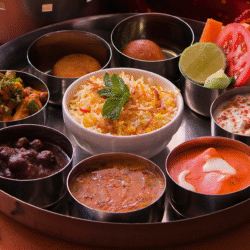When it comes to promoting an event, few tools are as powerful as authentic stories from real people who have already experienced success. Testimonials and case studies bring your brochure to life, transforming it from a static marketing piece into a dynamic narrative of trust and proof. While an event brochure typically outlines event details, design elements, and logistical information, integrating testimonials and case studies adds the human element—one that resonates deeply with your target audience. Whether you’re promoting a corporate conference, a charity gala, or a trade exhibition, the strategic inclusion of these persuasive tools can dramatically increase engagement and credibility.
Why Testimonials and Case Studies Matter
At their core, testimonials and case studies do more than validate your claims—they help potential attendees or sponsors visualize the value of your event through real experiences. A well-written testimonial speaks directly to emotions. It provides reassurance that your event delivers on its promises. Case studies, on the other hand, offer depth. They outline a challenge, the solution your event provided, and the measurable outcomes achieved.
In today’s saturated event market, attendees seek authenticity. They want to know that others have benefited before committing their time and money. This is why integrating real-world stories within your brochure design isn’t just effective—it’s essential. It shifts your brochure from being purely informational to being persuasive, influencing decisions and inspiring action.
Choosing the Right Testimonials
Not all testimonials carry the same weight. The most impactful ones are those that align closely with the objectives of your event. For example, if you’re promoting a business summit, a quote from a past attendee who secured new clients or partnerships carries far more influence than generic praise about “a great experience.”
Consider these guidelines when selecting testimonials:
-
Relevance: Choose testimonials from individuals or organizations similar to your target audience. This helps readers relate to their experiences.
-
Specificity: Avoid vague statements. Instead, opt for detailed feedback that highlights measurable benefits—such as “We generated 200 qualified leads during last year’s expo.”
-
Authenticity: Include full names, job titles, and company affiliations wherever possible. Real identities enhance credibility.
-
Variety: Showcase a mix of perspectives—attendees, sponsors, exhibitors, or even speakers—to provide a well-rounded view of your event’s success.
If your event is new, consider collecting short endorsements from partners, speakers, or organizations that support your mission. Early credibility can go a long way toward building momentum.
Structuring Testimonials in Your Brochure
Placement plays a crucial role in how testimonials are perceived. When integrated thoughtfully into your layout, they can reinforce key messages and guide the reader’s attention.
Here are some effective strategies:
-
Front Section: Include one powerful testimonial near the opening page. This immediately builds trust and sets a positive tone for the rest of the content.
-
Throughout the Brochure: Scatter shorter quotes strategically beside relevant sections—for instance, place a speaker testimonial next to the event agenda or a sponsor quote near partnership details.
-
Highlight Box Format: Use design elements like pull quotes, colored backgrounds, or speech bubbles to make testimonials stand out without overwhelming the layout.
-
Back Page: End with a strong testimonial that reinforces your event’s credibility and creates a lasting impression.
A professional design partner, such as companies offering Brochure Design Services in Dubai, can help ensure testimonials are visually integrated in a way that complements the flow and aesthetic of your content. They understand how to balance text, imagery, and white space to maintain readability while emphasizing trust-building elements.
Using Case Studies to Demonstrate Impact
While testimonials speak to emotion, case studies appeal to logic. They provide tangible evidence of success by illustrating how your event achieved specific outcomes. Case studies are especially effective for corporate or B2B events, where attendees and sponsors value data-backed insights.
To craft a compelling case study, use the following framework:
-
The Challenge: Start with the problem or need that your event aimed to address. For instance, “Many small businesses struggled to connect with investors in the renewable energy sector.”
-
The Solution: Describe how your event provided a platform for engagement, education, or exposure. “Our summit brought together 150 investors and 200 clean-tech entrepreneurs in one space.”
-
The Results: Conclude with measurable outcomes. “Over 60% of attendees reported securing follow-up meetings, and five startups received funding within three months.”
The case study format works particularly well when presented as a short narrative accompanied by visuals such as infographics, charts, or photographs. The key is to keep it concise yet informative—enough to showcase value without overwhelming readers.
Integrating Case Studies into the Brochure Layout
The placement of case studies should follow the same principle of storytelling. For example:
-
Midway Feature: Position a case study in the middle of your brochure to provide a “proof point” after readers have absorbed the event details.
-
Dedicated Spread: If space allows, dedicate two pages to a compelling success story complete with quotes, statistics, and imagery.
-
Interactive Elements (Digital Versions): In digital flipbooks or PDFs, include clickable elements such as video testimonials or expanded case study links for deeper engagement.
Pairing case studies with professional visuals enhances credibility even further. Photos of attendees networking, booths bustling with activity, or keynote speakers on stage can make the story feel authentic and relatable.
Balancing Design and Storytelling
Incorporating testimonials and case studies is not only about content—it’s about design harmony. The layout should allow these elements to shine without distracting from the overall narrative. Clean typography, consistent color schemes, and well-spaced content blocks help maintain balance.
Additionally, consider using icons or graphic elements to subtly guide the reader’s eyes from one story to the next. Infographics summarizing key statistics from your case study—such as “85% satisfaction rate” or “1200 attendees engaged”—can break up text-heavy sections and reinforce data visually.
When working with professionals who provide Brochure Design Services in Dubai, discuss how to best integrate social proof elements without compromising aesthetic appeal. Skilled designers can transform testimonial and case study content into visually compelling assets that enhance readability and emotional impact.
Gathering Effective Content for Future Brochures
If you’re planning to include testimonials and case studies in your future brochures, start gathering them early. Post-event surveys, video interviews, and social media feedback are valuable sources of authentic testimonials. Encourage participants to share quantifiable results—such as leads generated, sales made, or skills gained.
For case studies, follow up with partners or sponsors after the event to collect post-event metrics and testimonials. Documenting these results while the experience is fresh ensures accuracy and detail. You can even incentivize participation by featuring contributors prominently in your next brochure or online marketing campaign.
Common Mistakes to Avoid
Even though testimonials and case studies add immense value, they must be handled carefully. Avoid these pitfalls:
-
Overloading the Brochure: Too many quotes or stories can make the brochure cluttered. Curate the most impactful ones.
-
Using Anonymous Feedback: Readers are less likely to trust testimonials without identifiable sources.
-
Neglecting Visual Consistency: Inconsistent formatting can make even strong testimonials look amateurish. Maintain uniform design standards.
-
Ignoring the Narrative Flow: Randomly placed testimonials can feel disjointed. Ensure they support the brochure’s overall story arc.
The Result: A Brochure That Builds Trust and Drives Action
When executed thoughtfully, testimonials and case studies transform an event brochure from mere information into persuasion. They allow your audience to see themselves in the success stories of others. They bridge the emotional and logical sides of decision-making—trust and evidence—resulting in stronger connections and higher conversion rates.
In an era where audiences are overwhelmed by marketing messages, authenticity is your greatest asset. Combining real voices with smart design ensures your brochure doesn’t just tell people about your event—it proves why it’s worth attending.
With careful planning and collaboration, especially with expert Brochure Design Services in Dubai, your event brochure can become a storytelling powerhouse that inspires confidence, builds credibility, and ultimately drives participation.

